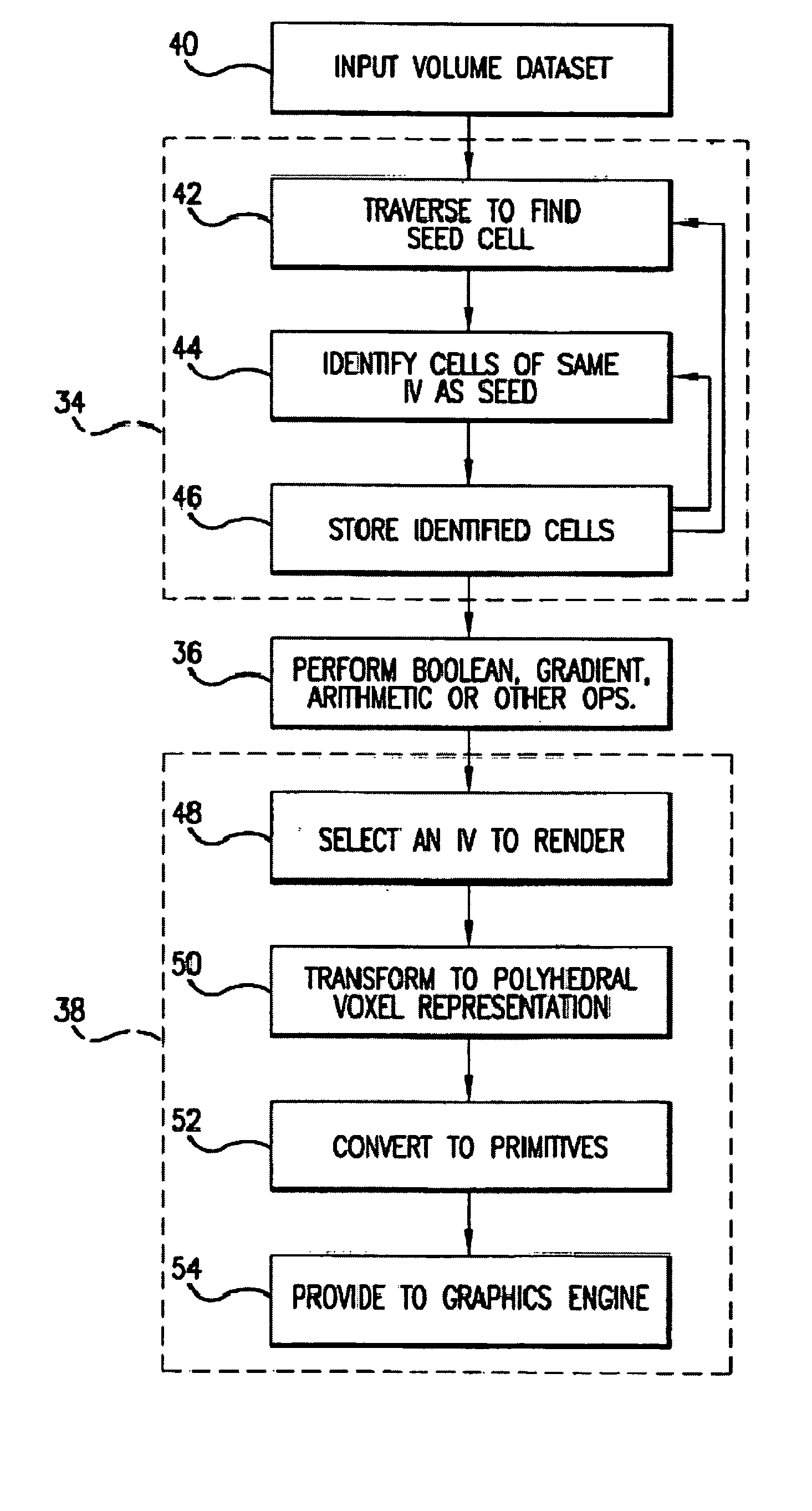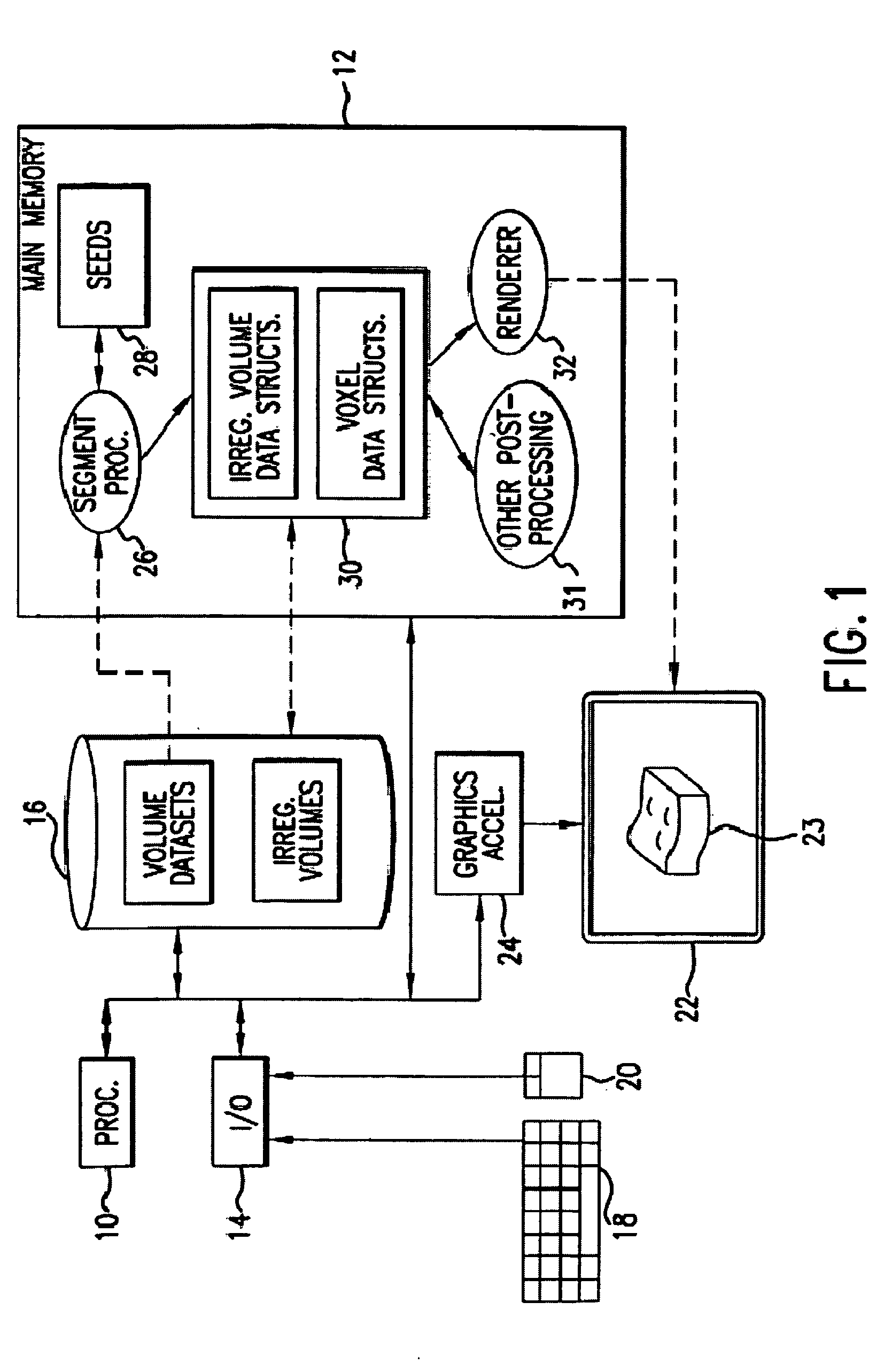Volume body renderer
a volume body and renderer technology, applied in the field of volume body renderer, can solve the problems of affecting the performance of many of these algorithms, requiring expensive and specialized hardware, and all of the known voxel data rendering methods are computationally software or hardware resource intensive, so as to achieve less computational complexity and perform more quickly and efficiently.
- Summary
- Abstract
- Description
- Claims
- Application Information
AI Technical Summary
Benefits of technology
Problems solved by technology
Method used
Image
Examples
Embodiment Construction
[0034] A person can use a computer, generally illustrated in FIG. 1, to effect the irregular volume (IV) identification, processing, rendering, and other methods of the present invention. As described below, due to the novel algorithms and methods of the present invention, the computer need not be a powerful graphics workstation of the type conventionally used to render complex three-dimensional datasets, such as that commonly used in subsurface geological analysis; rather, in some embodiments of the invention it can be an ordinary personal computer or even a laptop computer having relatively limited memory, graphics and processing power. A suitable computer has, for example, a processor 10, main memory 12 in which programs and data are stored during operation, input / output control 14, a hard disk 16 or similar device in which programs and data are stored in a non-volatile manner, a keyboard 18, a mouse or similar pointing device 20, and a video monitor or other display device 22 on...
PUM
 Login to View More
Login to View More Abstract
Description
Claims
Application Information
 Login to View More
Login to View More - R&D
- Intellectual Property
- Life Sciences
- Materials
- Tech Scout
- Unparalleled Data Quality
- Higher Quality Content
- 60% Fewer Hallucinations
Browse by: Latest US Patents, China's latest patents, Technical Efficacy Thesaurus, Application Domain, Technology Topic, Popular Technical Reports.
© 2025 PatSnap. All rights reserved.Legal|Privacy policy|Modern Slavery Act Transparency Statement|Sitemap|About US| Contact US: help@patsnap.com



